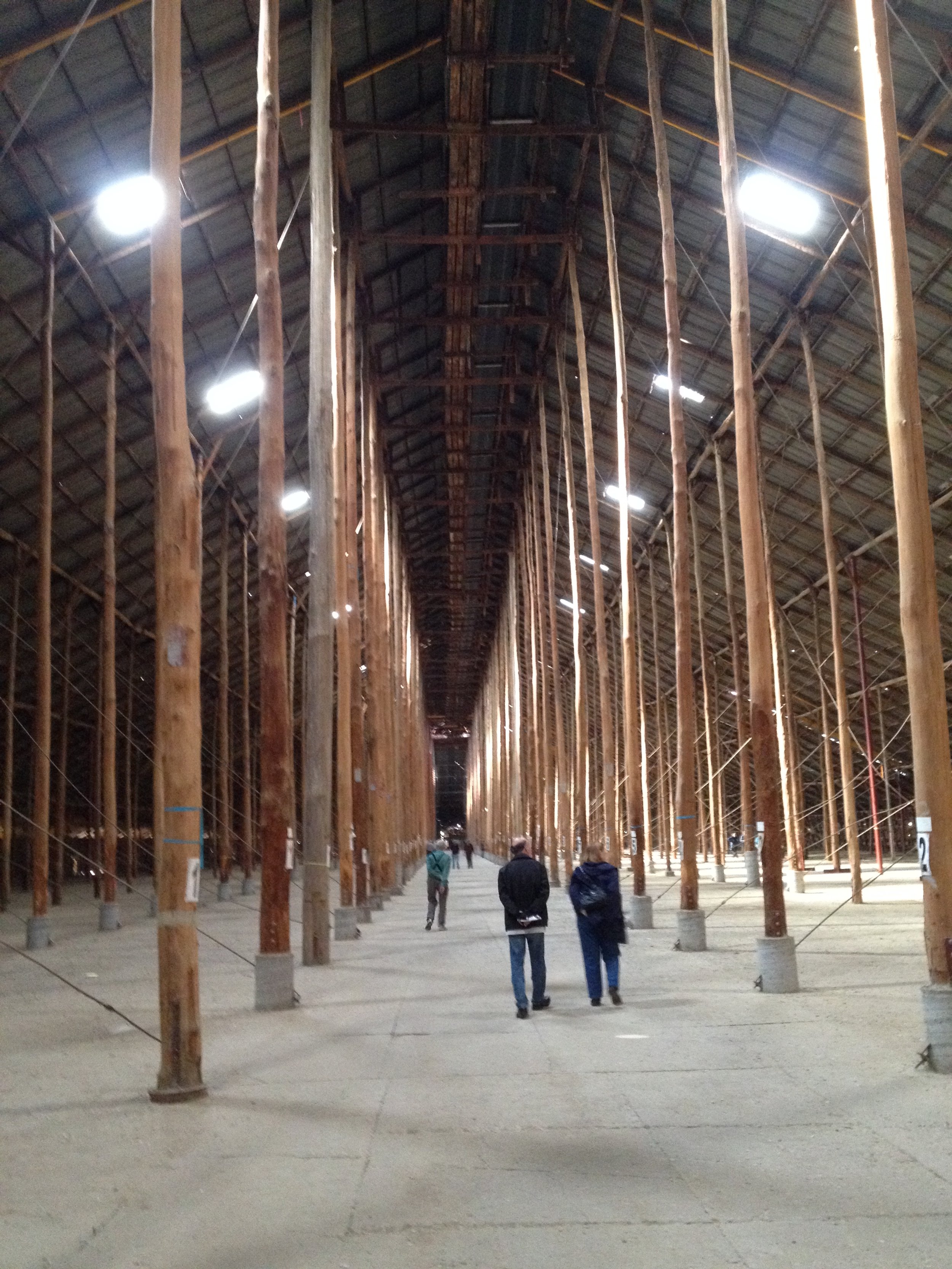The Shed
Two items inextricably bound up with Australian masculinity are the Ute and the shed. Of the two, the Ute has become a politically protected species and now dominates our roads. The shed, on the other hand, has had a more complicated trajectory.
The Rural Shed
Australia’s love affair with sheds began in the bush. The rural working shed, especially the shearing shed, has an important place in national mythology as an emblem of the outback, of mateship, of the Australian character – pioneering, masculine and resourceful. It has been celebrated in art from Tom Roberts iconic Shearing the Rams to Six Stand Shed by Pro Hart. Henry Lawson and Banjo Patterson, writers that defined Australia’s cultural self- image, wrote copiously of sheds.
National Gallery of Victoria
Working sheds are also celebrated in the performing arts. Philanthropic arts company Big hART‘s Acoustic Life of Sheds engaged musicians and audio-visual artists to celebrate sheds as memory sound-shells and embodiments of rural culture. Audiences drove from shed to shed.
And country sheds have become tourist attractions. Their original purposes long-gone, they are drawcards for nostalgia. In the woolsheds at Kinchega and Mungo we can hear the shears clicking and smell the wool grease and the sweat of shearers from long ago.
A tourism high point is the Murtoa Stick Shed with its enormous interior of mountain ash tree trunks. Built for emergency wheat storage during World War Two, it was completed in four months using traditional bush construction techniques. A testament to Australian bush ingenuity, it’s claimed to be the largest ‘rustically-built’ structure in the world.
The Backyard Shed
While the rural working shed showcases our masculinist national character, its evolutionary offshoot the backyard shed is traditionally the bastion of the individual Australian male.
The Aussie man’s shed is his castle. He is identified by its size, what he puts in it and what he can fix in it. It has been immortalised in song and meme. As John Williams sings, all Australian boys need a shed.
But unlike its counterpart the Ute, since its mid-twentieth century heyday the backyard shed has dwindled to the point of life support. Australians are building bigger houses on smaller blocks, with no room for the traditional shed. More of us live in apartments. And with housing prices high, sheds are being converted into granny flats, accommodation for family members excluded from the market, and for rental income.
An increasing number of blokes no longer have a shed of their own.
Enter the Men’s Shed movement. These communal sheds provide spaces where men can work alongside each other, fixing things, passing on skills and making things for their local communities. With its slogan ‘Shoulder To Shoulder’ capturing the way men interact, the movement started as a primary health strategy for older men. Many of its thousands of members are retired. Increasingly they are also disabled, gay or ethnically diverse. First Nations skills are prized. The image of Australian masculinity has expanded, and sheds are continuing to evolve.
Source:https://www.kewnlc.org.au/mens-shed/
Where to Now for Sheds?
These days sheds trigger both nostalgic affection and national self-reflection. We view, read about and interpret rural sheds in the context of who we were at particular times and places in our history.
We are also more conscious about which aspects of the backyard shed and its culture we wish to foster. To some extent the shed’s existence has been outsourced from millions of individual decisions to semiformal external provision. A distilling of what was good about it, and a consideration of what other purposes it can serve are part of the process.
The shed as cultural icon and historic artifact and as individual male sanctuary continues to hold its place in the mental life of our nation.


